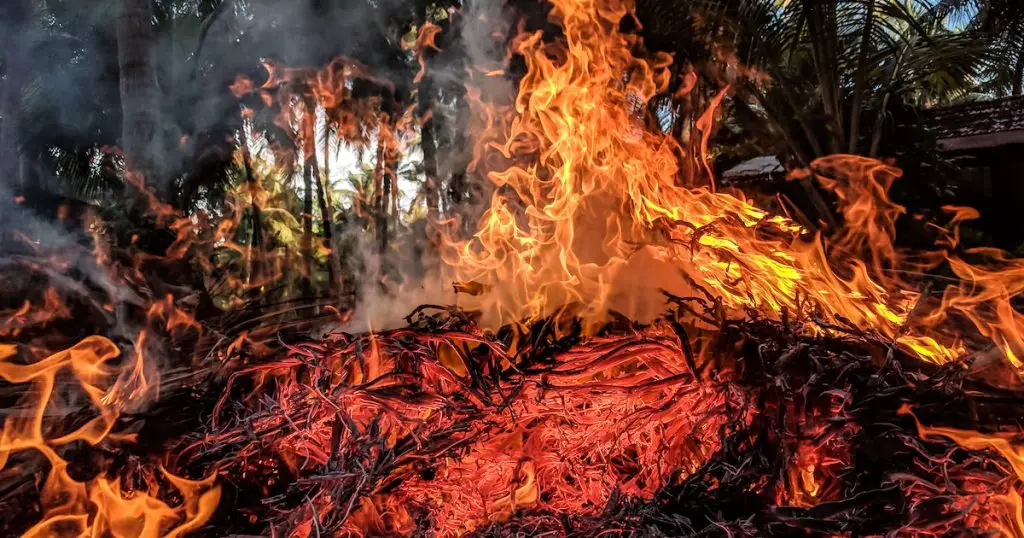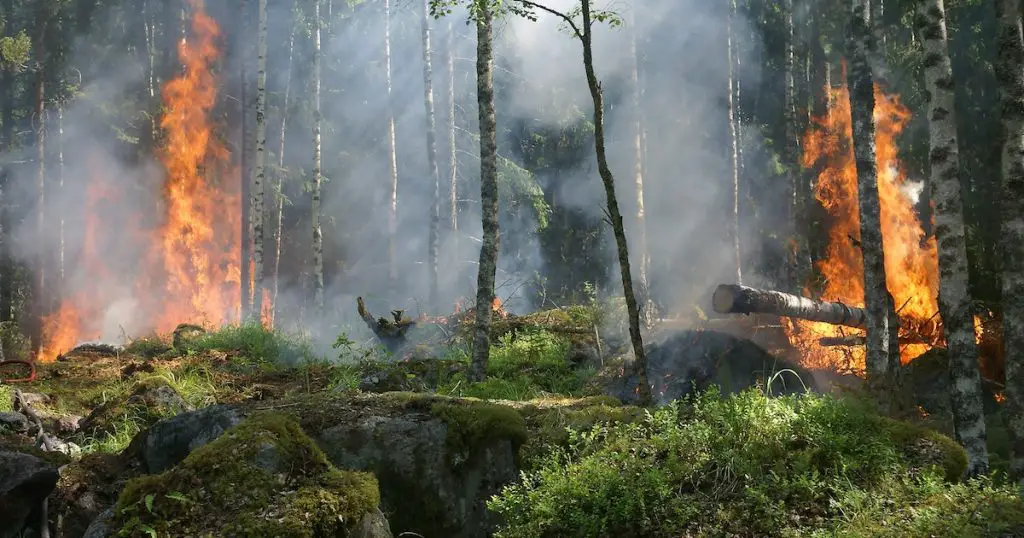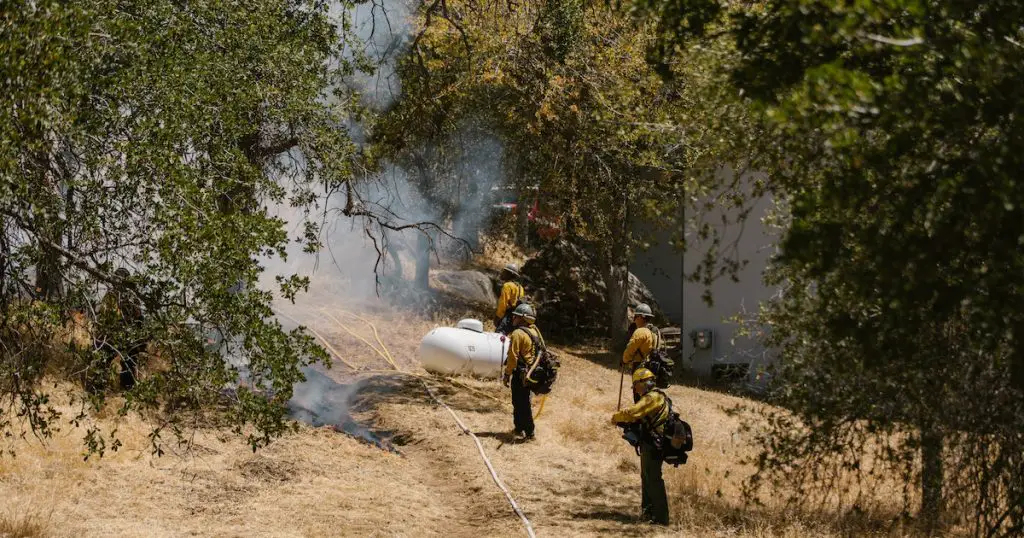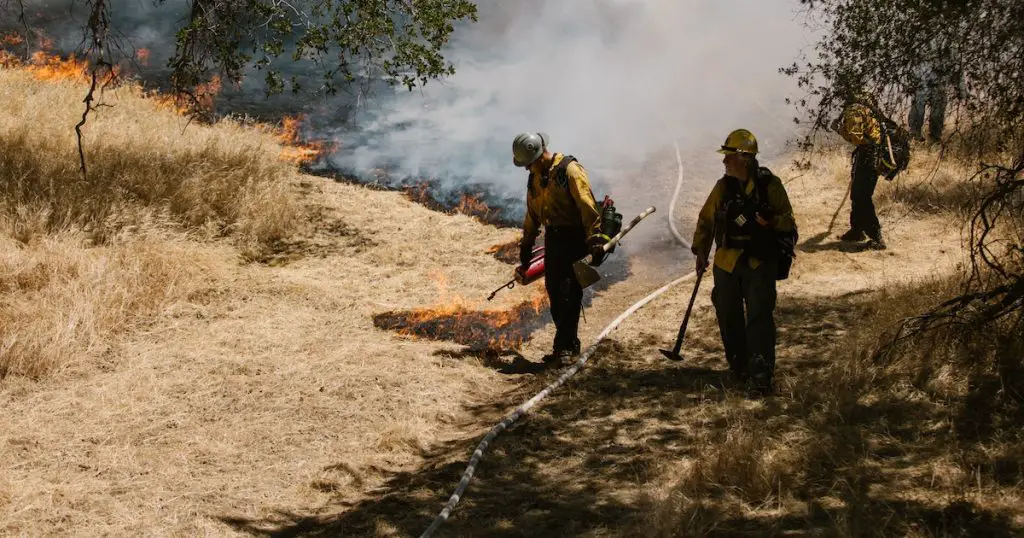Prescott, a vibrant city nestled in Arizona’s high desert, is rich in history, culture, and natural beauty. But the Impact of historic wildfires on Prescott’s landscape and community has been profound, leaving a mark that transcends mere physical alterations.

As wildfires continue to shape the region’s identity, it becomes crucial to explore their lasting influence on the environment, economy, society, and even the way the community prepares for future risks. This article aims to unfold these dimensions through detailed insights.
The Environmental Effects
Wildfires are a force of nature that leaves an indelible mark on the environment, and Prescott’s landscape bears the evidence of this profound transformation. The immediate destruction of vegetation alters ecosystems, impacting wildlife habitats and leading to soil erosion.
These changes can further affect water quality in rivers and streams, creating a ripple effect across various ecological aspects. Yet, fire is also a natural part of forest regeneration, and the environment’s ability to recover and renew is a testament to nature’s resilience. Preservation efforts, reforestation, and responsible land management play essential roles in aiding this recovery.
The balance between understanding wildfires as both a destructive force and a natural phenomenon is key to shaping Prescott’s environmental response and long-term stewardship. The landscape of Prescott scarred but ever-regenerating, stands as a symbol of nature’s complex dance with destruction and renewal.
Transformation of Landscape
The landscape alteration due to wildfires has manifested in various ways.
- Alteration of Vegetation: Once lush and diverse, the vegetation in many areas of Prescott has been dramatically altered. Fire’s immediate destruction of flora leads to the loss of native species, while the longer-term impacts are visible through changes in plant compositions and soil quality. The regeneration of vegetation is often slow and complex, leading to an altered ecosystem.
- Soil Degradation: Wildfires can lead to severe soil degradation. The intense heat destroys organic matter and nutrients, making the soil more prone to erosion. Additionally, the loss of vegetation exposes the soil to weather elements, leading to further degradation.
- Water Resource Impact: Water bodies near wildfire-affected areas often experience significant changes. Ash and debris flow into rivers and streams, affecting water quality. The destruction of riparian vegetation impacts both the water temperature and habitat for aquatic life. Long-term studies, such as those conducted by the US Geological Survey, show that these changes may last for years or even decades.

Wildlife Impact
The repercussions of wildfires extend beyond the immediate environment to the animal inhabitants.
- Habitats Destroyed: Wildfires often result in a loss of habitat for many animals. This disruption forces species to relocate, sometimes leading to territorial conflicts or migration to unsuitable habitats. The immediate aftermath of a fire can be a critical time for many species, as documented by organizations like Defenders of Wildlife.
- Species Endangerment: Some species may face the brink of endangerment or even extinction as a result of wildfires. The loss of habitat and food sources, along with direct mortality, can have lasting impacts on the local fauna. Research in areas like Prescott helps in understanding the complex interplay between wildfires and wildlife survival.
The Economic Impact
The economic ramifications of historic wildfires in Prescott are multifaceted, reaching far beyond the immediate destruction of property and infrastructure. These natural disasters disrupt local businesses, impact tourism, and place immense strain on public finances due to emergency response and recovery efforts.
Agricultural sectors may suffer from the loss of crops and grazing lands, affecting both local and regional economies. Insurance costs rise, and long-term investments are needed to rebuild and mitigate future risks. Yet, amid these challenges, opportunities for growth and innovation emerge.
New building technologies, eco-friendly practices, and a renewed focus on sustainable development can drive economic resurgence. The economic landscape of Prescott, shaped by the fires, embodies a story of loss, resilience, adaptation, and hope, reflecting a community committed to rising from the ashes and forging a robust economic future.
Impact on Agriculture and Forestry
- Agricultural Losses: Wildfires can wreak havoc on agricultural lands, destroying crops, pasture, and farming equipment. For Prescott’s farming community, this has led to financial challenges and the need to rebuild or rethink traditional agricultural practices. The US Department of Agriculture provides insights into the federal response to such agricultural losses.
- Forestry Damage: Forests are not only a vital part of the ecosystem but also a significant economic resource. Wildfires have led to the loss of valuable timber, affecting the local forestry industry. The long-term impact on forestry includes not just financial loss but also challenges in managing forest health and preventing future wildfires.
Damage to Property and Infrastructure
Wildfires leave behind a trail of destruction, impacting residential, commercial, and public infrastructure.
- Residential and Commercial Property: Many families and businesses in Prescott have faced the devastating loss of property due to wildfires. The rebuilding process is often prolonged and costly, leading to significant economic strain. Resources such as FEMA’s guide on rebuilding after wildfires provide support and guidance for those affected.
- Infrastructure Damage: Roads, bridges, and other public infrastructure can be severely damaged during wildfires, leading to immediate repair needs and long-term planning challenges. The Federal Highway Administration is often involved in assessing and funding these critical infrastructure repairs.

Long-term Economic Recovery Challenges
The road to economic recovery after a wildfire is a complex and often slow process.
- Economic Revitalization Plans: Community leaders and government agencies work together to devise strategies to revitalize the local economy. This includes not just rebuilding but also creating sustainable practices to mitigate future risks.
- Insurance and Financial Assistance: The role of insurance companies and financial assistance from federal and state governments is crucial in supporting the affected community. However, the process can be intricate and time-consuming, necessitating careful planning and collaboration.
The economic impact of wildfires in Prescott is a multi-dimensional issue, reflecting both immediate needs and long-term strategic planning. Understanding and addressing these challenges require a comprehensive approach, engaging various stakeholders, including residents, businesses, government agencies, and nonprofits.
The Social Impact
The historic wildfires in Prescott have left a profound and lasting imprint on the social fabric of the community. The physical destruction is often matched by deep emotional scars, affecting individuals and families who have lost homes, possessions, or loved ones.
The collective trauma fosters a sense of unity and resilience, where neighbors support one another and communities bond in the face of adversity. Volunteers, local organizations, and first responders become symbols of hope and determination.
Yet, the challenges of rebuilding and the ongoing threat of future wildfires remain a source of anxiety and concern. Through it all, Prescott’s social landscape continues to evolve, reflecting a community that faces its fears and grows stronger together, embodying the very essence of the human spirit and endurance.
Community Displacement
The displacement of community members due to wildfires is a complex and emotional process.
- Immediate Displacement: The need to evacuate and find temporary shelter during a wildfire is a traumatic experience for many. Resources like the American Red Cross play a vital role in providing immediate assistance.
- Long-term Relocation: Some residents may find themselves unable to return to their homes, leading to long-term or permanent relocation. This can have profound impacts on community cohesion and individual identities.
Psychological Effects on Residents
The psychological toll of wildfires is often overlooked but is an essential aspect of understanding the social impact.
- Trauma and Mental Health: The trauma of experiencing a wildfire, losing property, or even loved ones can have lasting mental health effects. Support from mental health professionals and community support systems is vital in helping individuals cope.
- Children’s Psychological Health: Children can be particularly affected by the trauma of wildfires. Schools, parents, and community organizations must work together to provide support and a sense of normality in the aftermath of such events.
Cultural Heritage Loss
Wildfires can also lead to a loss of cultural heritage, affecting a community’s identity and historical connection.
- Destruction of Landmarks: Historical landmarks and culturally significant sites may be destroyed or damaged during wildfires. The loss is not just architectural but also a piece of Prescott’s shared history and identity.
- Impact on Native Communities: Native American communities in the region may face unique cultural and spiritual losses due to wildfires. The protection and restoration of these sites are complex but vital aspects of preserving cultural heritage.
The social fabric of Prescott’s community is intricately woven with its landscape, economy, and cultural heritage. Wildfires have tested this fabric, highlighting both vulnerabilities and resilience. As the community continues to adapt and grow, the social impact of these fires remains a poignant reminder of shared experiences and collective strength.
Response and Mitigation Strategies
In the face of the relentless challenge posed by wildfires, Prescott’s response and mitigation strategies stand as a testament to human resilience and ingenuity. These strategies encompass an array of actions, from immediate interventions during a crisis to long-term planning that aims to reduce future risks.
Government initiatives set the stage by providing resources and implementing vital regulations, while community involvement adds the essential human touch, transforming policy into practice. The synergy of top-down governance with grassroots engagement creates a comprehensive and adaptable system.
This approach enables Prescott to not only withstand the destructive force of wildfires but also learn, innovate, and thrive in an environment where such natural occurrences are an ever-present reality.
Government Initiatives
Government plays a crucial role in both immediate response and long-term strategic planning.
- Funding: Federal, state, and local government agencies provide financial resources for immediate disaster relief and rebuilding efforts. The Disaster Relief Fund is one of many avenues through which support is channeled.
- Policies and Regulations: Governments have implemented policies that guide land use, building codes, and fire safety to minimize future risks. Collaboration between agencies ensures these regulations are effective and tailored to the specific needs of Prescott.
Community Involvement
Community participation is key to effective response and mitigation.
- Local Volunteer Efforts: Volunteer groups play an essential role in immediate response and ongoing support. Organizations like Volunteer Wildfire Services actively engage the community in various capacities.
- Community Resilience Programs: Building resilience within the community involves education, training, and ongoing support. Initiatives such as community workshops and local partnerships foster a sense of ownership and preparedness.
Case Studies: A Closer Look
Delving into specific instances of wildfires in Prescott offers a detailed and nuanced understanding of their impact. Through the examination of particular events, like the Doce Fire and Yarnell Hill Fire, researchers, policymakers, and the community can draw lessons that transcend numbers and statistics.
These case studies humanize the broader narrative of wildfires, putting faces to the data, and capturing the heroism, loss, resilience, and adaptability that define Prescott’s ongoing relationship with these natural phenomena.
By focusing on individual stories and analyzing tangible events, Prescott continues to learn, grow, and fortify itself against future challenges.
The Doce Fire (2013): Analysis and Lessons
The Doce Fire left an indelible mark on Prescott, providing several key takeaways.
- Fire Behavior and Spread: Studying the fire’s behavior helps in understanding how similar future events might be mitigated. Academic research and government reports have delved into the specifics of this fire.
- Community Response: The local response to the Doce Fire, including evacuation procedures and immediate relief efforts, offers valuable lessons in community engagement and preparedness.
The Yarnell Hill Fire (2013): A Tragic Loss
The Yarnell Hill Fire is particularly poignant due to the loss of 19 firefighters, the greatest loss of life in a U.S. wildfire since 1933.
- Tragedy and Heroism: The Granite Mountain Hotshots’ story is one of courage and sacrifice. Documentaries and memorials continue to honor their memory.
- Lessons in Safety and Protocol: This tragic event led to an extensive review of safety procedures, resulting in changes to training and protocols for wildfire response teams across the country.
The Way Forward: Prevention and Preparedness
As Prescott reflects on its past experiences with wildfires, the community’s focus is shifting toward a future characterized by prevention and preparedness. This involves an amalgamation of public education, strict adherence to safety regulations, technological innovation, and ongoing research.
The collaboration between government agencies, local communities, and various stakeholders aims to create a resilient environment where the lessons learned from historic wildfires drive the strategies to safeguard Prescott’s landscape and community.

The way forward is not just a path of recovery but a journey towards sustainable living and communal harmony in the face of nature’s unpredictable challenges.
Fire Prevention Measures
Preventing wildfires requires a multifaceted approach.
- Education and Awareness: Community education on fire safety, including safe practices in fire-prone areas, is essential. Initiatives like Smokey Bear’s wildfire prevention campaign are instrumental in raising awareness.
- Regulations and Compliance: Implementing and adhering to regulations such as building codes and land management practices are key to minimizing risks.
Technological Advancements and Research
Innovation plays a vital role in enhancing wildfire prevention and response.
- New Technologies: Emerging technologies, such as drones and advanced firefighting equipment, are revolutionizing the way wildfires are fought and prevented.
- Ongoing Research: Academic and governmental research into fire behavior, prevention strategies, and recovery mechanisms ensures a continuous evolution of understanding and approach.
Frequently Asked Questions:
In this section, we will be delving into some of the most common inquiries and curiosities that surround our topic.
What were the largest wildfires in Prescott’s history?
Several notable wildfires have shaped Prescott, including the Doce Fire and the Yarnell Hill Fire. Ongoing historical research captures the full scope of these events.
How have wildfires changed Prescott’s landscape over time?
Wildfires have led to significant transformations in vegetation, soil, and water resources. The impacts are both immediate and long-lasting.
What are the key measures taken by the community and government to mitigate wildfire risks?
A combination of government initiatives, community involvement, technological advancements, and comprehensive planning form the backbone of mitigation strategies.
Conclusion
The impact of historic wildfires on Prescott’s landscape and community is both complex and multifaceted. The interplay between environmental, economic, and social dimensions paints a vivid picture of a community shaped by natural forces yet resilient in its response.
As Prescott continues to adapt and innovate, the lessons learned from its fiery past fuel a future of preparedness, resilience, and community spirit.



Leave a Comment
You must be logged in to post a comment.